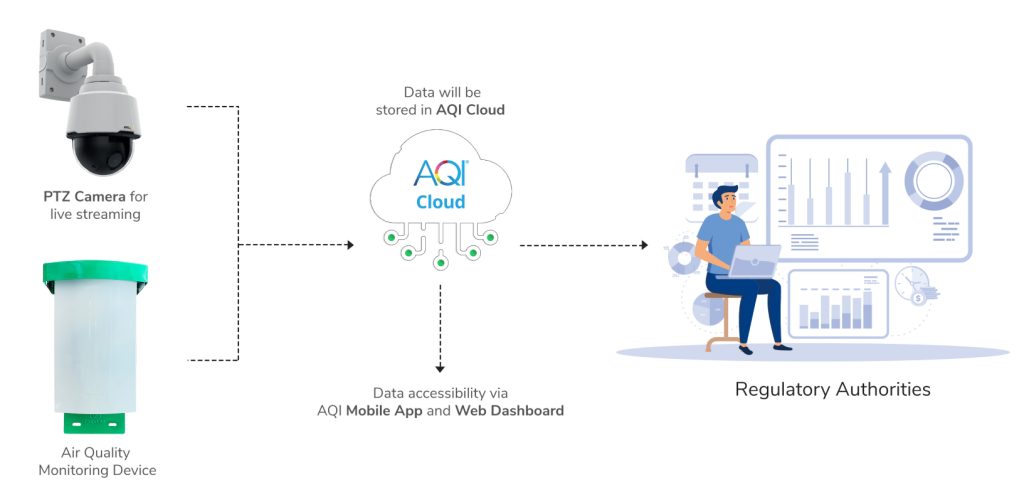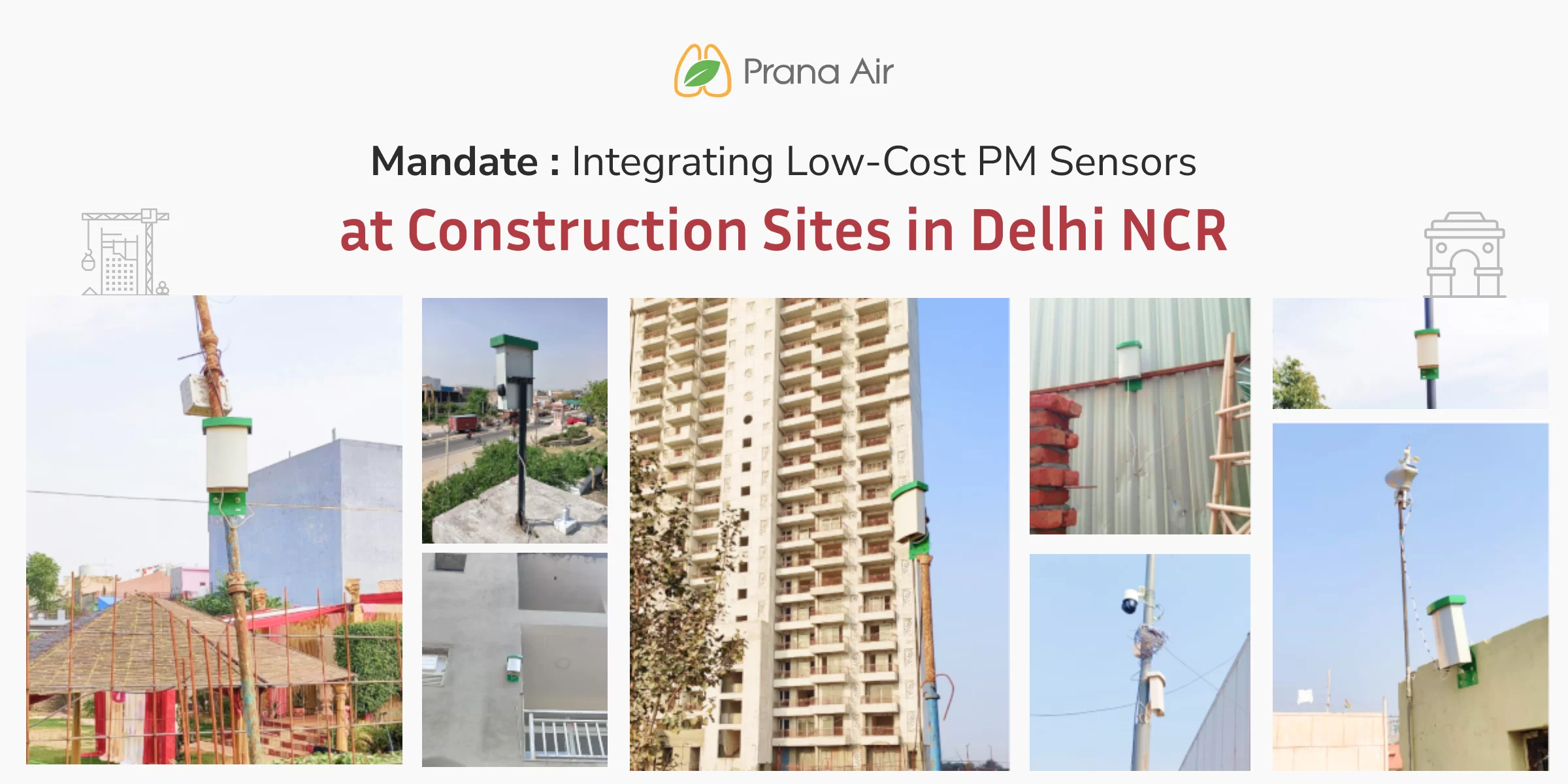Construction is a major part of growth and urbanization. It is necessary because of the rapid growth in the population. However, construction activities emit various pollutants in the air. These hazardous pollutants can lead to various severe health issues. For it, the necessary mandates and rules are needed. Thus, the pollution control boards of various states have taken the necessary actions. They have mandated low-cost sensors at construction sites in Delhi NCR.
Did you know that 30% of pollution is releasing from construction sites? Building sites highly release dust and are a great source of particulate matter. It has various impacts on human health as passing a source in the air pollution is not enough to get in together. Paying close attention to these sources can help maintain a clean environment.
The Commission for Air Quality Management (CAQM) in the National Capital Region NCR has set various guidelines. The Delhi Pollution Control Committee (DPCC), Uttar Pradesh Pollution Control Board (UPPCB), Haryana State Pollution Control Board (HSPCB) and Rajasthan State Pollution Control Board (RSPC) considered it. They aimed to enforce measures for better air quality with clean construction. Let’s delve more into the context of its importance and other points.
What pollutants are released from construction sites in Delhi NCR?
Every day, Delhi NCR locks in a relentless battle against Air pollution. Because every morning comes with a new set of records of the Air Quality Index. One of the major sources is construction sites that emit a blend of dust and chaos in Delhi Air. These sites add fuel to the city’s choking air that’s concerning. Particulate Matter, Carbon Monoxide, Volatile Organic Compounds (VOCs) etc emit from these sites.

PM2.5 and PM10 are the major concerns because of high emissions through sites. These emit from various activities at sites including material handling, destruction, vehicles and others. Moreover, diesel-powered machinery and other building materials emit NOx and VOCs. These highly trigger the health of workers and surrounding communities. Even construction sites of over 500 square yards are the key sources.
How Government Initiatives Combat Construction Site Pollution?
Did you know Delhi is at the top of the list of the most polluted cities in the world as per WHO? It is because of various activities such as rapid urbanization. The pollution levels in Delhi are concerning and require strict and quick actions. Since these are causing immense effects on human health. Thus, the state’s pollution control boards have taken the necessary actions. Firstly, the Delhi Pollution Control Committee (DPCC) has published the toolkit for clean construction. These include man
The following are some directions taken by governmental bodies for construction sites in Delhi NCR:
These directions are under Section 12 of the Commission for Air Quality Management (CAQM) in the National Capital Region NCR and Adjoining Areas Ordinance 2021. (https://pib.gov.in/Pressreleaseshare.aspx?PRID=1759914)
- Construction sites of equal or more than 500 square meters are needed to install PM sensors. Reliable low-cost PM2.5 and PM10 sensors are mandatory to install. Moreover, these should link to cloud storage and web dashboards.
- Besides, these linked web dashboards must be shared with CPCB (Central Pollution Control Board) via a web portal. Government and administrative agencies link with these projects.
- Furthermore, the monitoring purposes include video fencing with remote connectivity. The project sites must integrate Pan-Tilt-Zoom (PTZ) cameras for monitoring and incorporate them in the web portal.
- Moreover, These cameras should have live-streaming capabilities. Besides, the static IP connections should provide visual insights into the on-site activities. Through the Static IP (Live), it transmits the visual data to the CPCB (Central Pollution Control Boards) and other authorities.
Second Regulations:
- For every construction and demolition project (equal or more than 500 sq. mt.), vital to register at the web portal. It is for Urban Local Bodies in the NCR.
- This web portal is set by the DPCC to monitor dust emissions from projections within the NCR areas.
- All sites and projects have to form a checklist as guidelines by governmental bodies. These are directed to the authorities through the web portal timely.
- The checklist includes self-monitoring or self-auditing their activities. With it, it also adds the list of dust control measures to confirm the self-declaration.
Where to get the low-cost PM2.5 and PM10 sensors for construction sites in Delhi NCR?
Well, the low-cost PM2.5 and PM10 sensors can become the pivotal strategy in air pollution mitigation. These help in real-time monitoring and rapid decision-based action. For this, Prana Air’s sensor-based monitors and advanced sensors have high reliability. Here construction sites can get low-cost and reliable PM2.5 and PM10 sensors.
Introducing Prana Air’s Particulate Matter Sensors for Construction Sites:
Prana Air’s air quality monitors offer cutting-edge technologies for construction sites’ air monitoring. These designed with high precision and reliability. These sensors provide real-time and accurate data on air quality. Additionally, sensors cover all the demands needed at construction sites. Since these monitors come with cloud storage and a web dashboard. Construction sites can get the data through app connectivity. The same connectivity with a Static IP address can transfer with the governmental authorities. Hence through Deploying Prana Air’s sensors, authorities can take proactive actions. You can also ensure a safer and healthier environment at your sites.

Enhance the seamless integration with Pan-Tilt-Zoom (PTZ) cameras with Prana Air’s air quality sensors. It enables the real-time visual monitoring of construction sites. These help in providing the sources of pollution at sites. Moreover, it will provide high transparency and accountability for decision-making. Since the data accessibility through Static IP connection can easily share with regulatory bodies.







